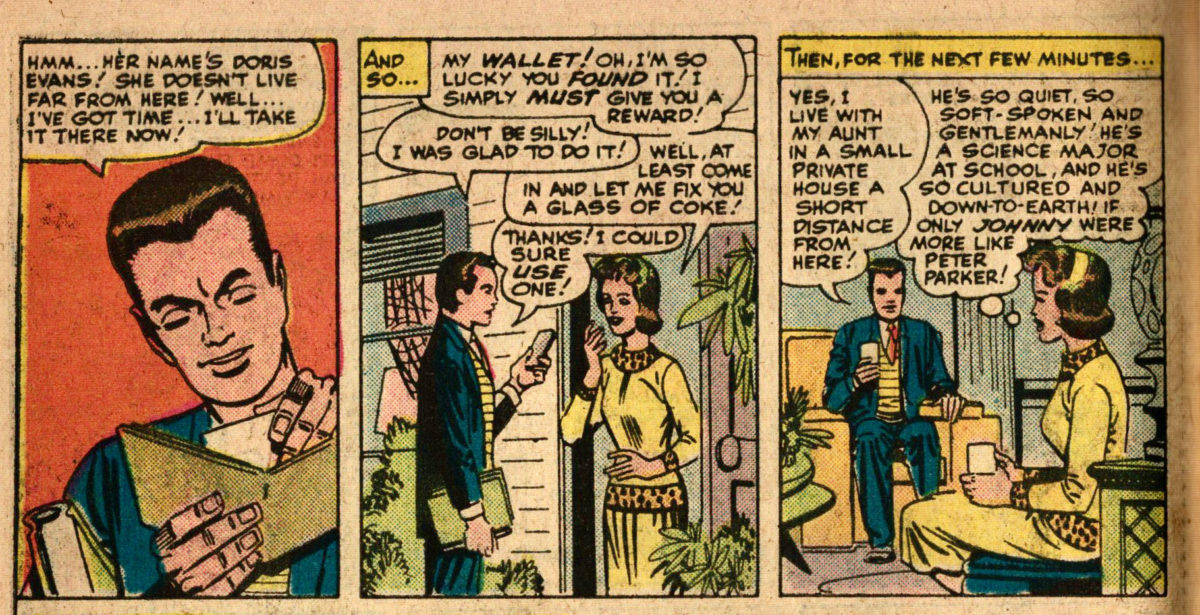Featuring: Spider-Man
Release: November 12, 1963
Cover: February 1964
12 cents
Written by: Stan Lee
Illustrated by: Steve Ditko
Lettered by: Art Simek
22 pages
We’ve had some great superhero battles in these pages. Put Spider-Man’s wits and abilities to the test against great foes. We get a new foe this issue.
But this issue also gets to the core of what Spider-Man is really about: balance.
His first appearance ended with the famous phrase about responsibility. That suggested he had a responsibility to use his powers to stop criminals and such. But this comic underscores other responsibilities. His aunt is sick and he has a responsibility to her. He also has financial responsibilities. He’s also a student, responsible for his studies. But what of his social responsibilities? What does he owe the kids in his class toward attempting to be friends with them? What about responsibilities to his romantic life? He’s also a photojournalist, and has a responsibility to journalistic integrity. He has a lot of responsibilities. How to balance them all? That’s the main theme of this series, and this issue is the best microcosm yet.
In fact, Stan’s opening hype seems pretty accurate to me for once. I’ll go ahead and call that my review.

There’s a lot going on in this issue, as my preamble may have implied. Let’s dive in.
Continue reading “Amazing Spider-Man #9”
































